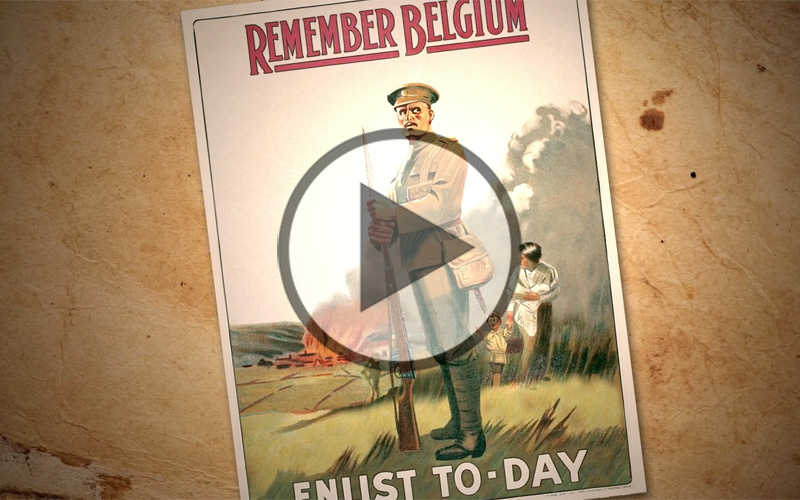Video transcript
Welcome to Bisley, the famous rifle ranges. During the years leading up to war, depots such as Bisley, and many others up and down the country, were used as training depots, preparing soldiers for service overseas. These depots are still used for this purpose today.
Interpreter: This is a Short Magazine Lee Enfield, or SMLE for short. This is a standard infantry rifle issued to every soldier in 1914. It’s a good rifle and in good hands it can be extremely effective.
To use it, you first have to work the bolt. Now the bolt’s open, the chamber’s exposed and you can load in your ammunition. In your pouch you have two charger clips of 5 rounds each. You load in your charger clip, push the rounds down, leaving the charger clip out. The charger clip goes back into your pouch. Then you close the chamber. You’re then ready to fire.
Now, earlier versions of this SMLE would have had what’s called a cut-off. This will allow you to separate the rounds in the chamber. So you could load in your 10 rounds, close the cut-off, and then continue to load in singly. If you were to engage a mass target of German infantry, you would open the cut-off and you would be able to fire rapid.
The Enfield has got a maximum range of 2,000 yards, although if you can see a target at 2,000 – let alone hit it – then you’re a better man than I am. It’s got a killing zone range of 600 yards. Anything from there downwards is an effective range and can be very, very deadly indeed.
A trained-shot professional could get off 15 aimed rounds a minute, that’s a withering rate of fire.
The weight is quite important. It’s a heavy rifle, about 9lb in weight. So when you’re on marches, manoeuvres, you’ve got your sling.
If you’re unfortunate enough to have to engage Fritz up close and personal, you’ve got your bayonet – 17 inches of cold steel. It fixes on the rifle and allows you to engage the enemy.
 First World War in Focus
First World War in Focus


